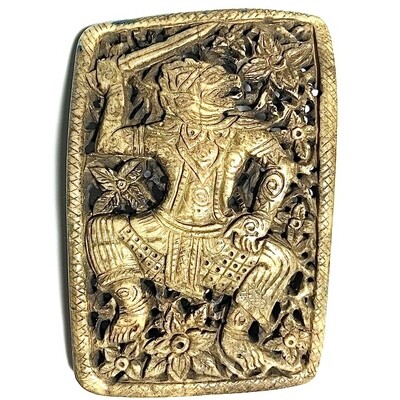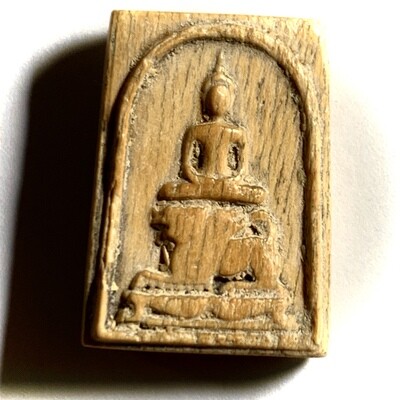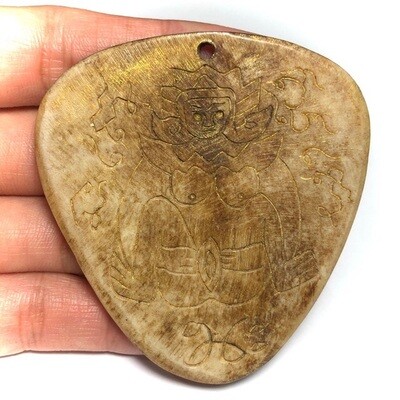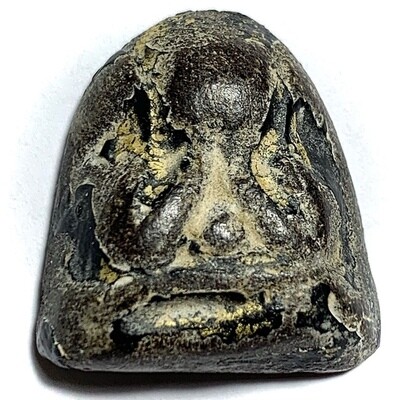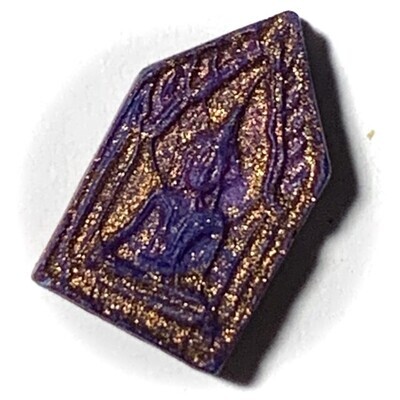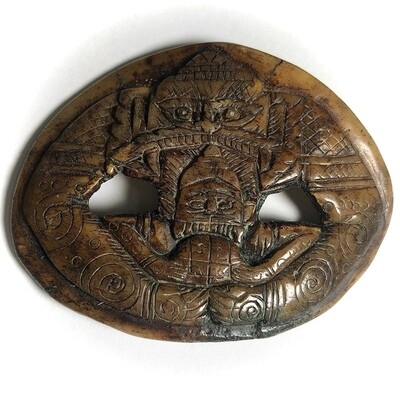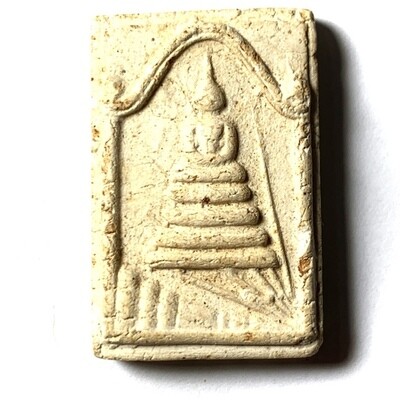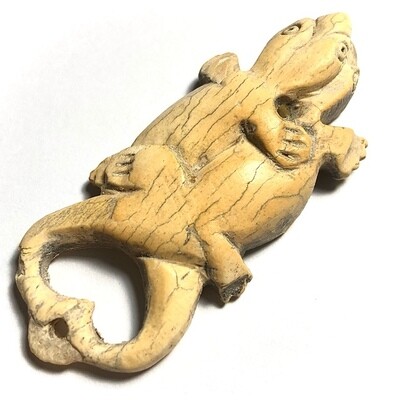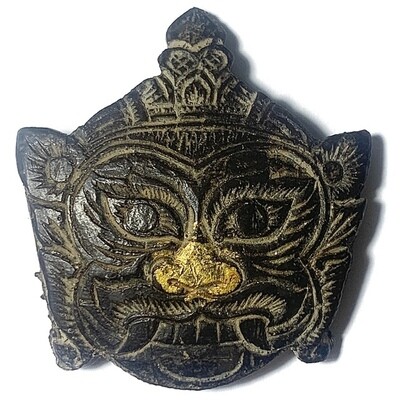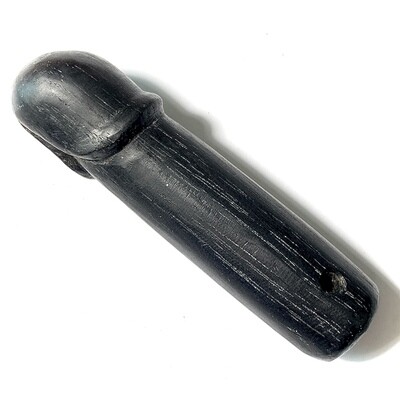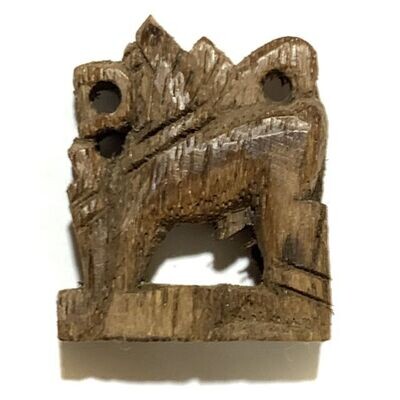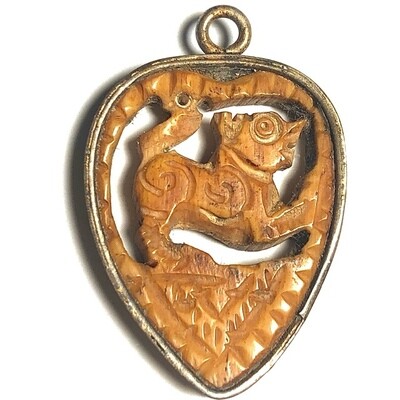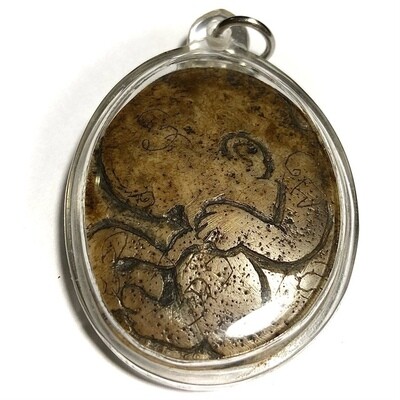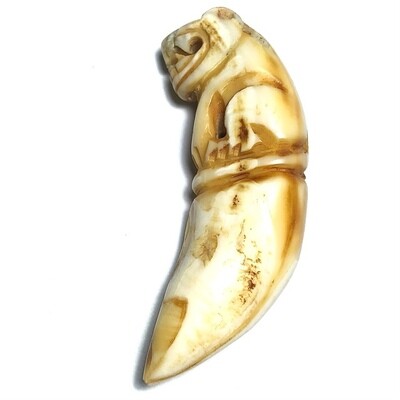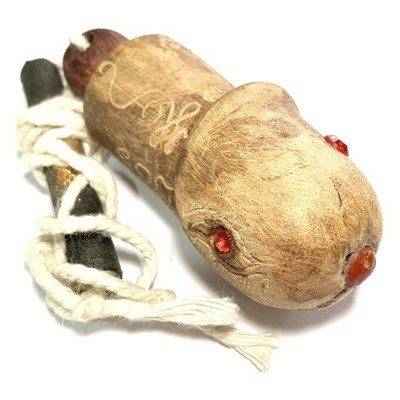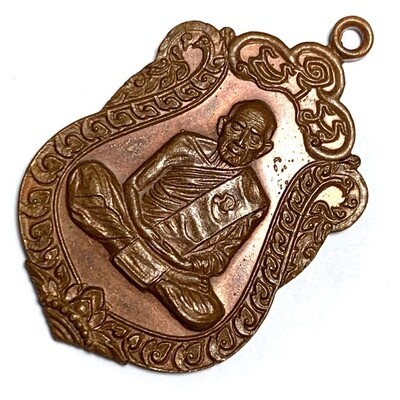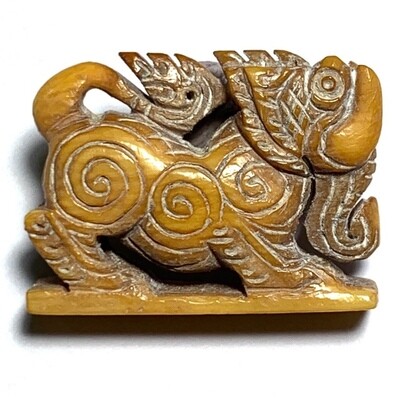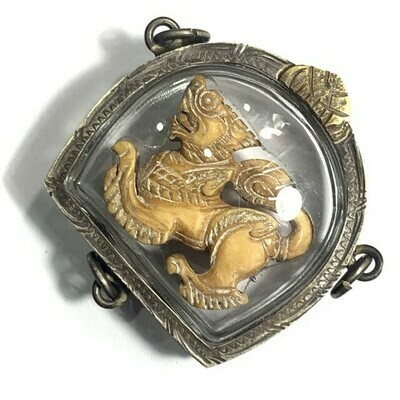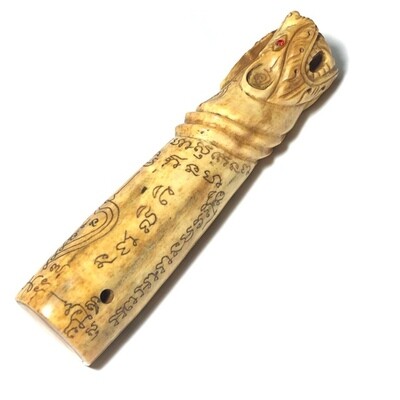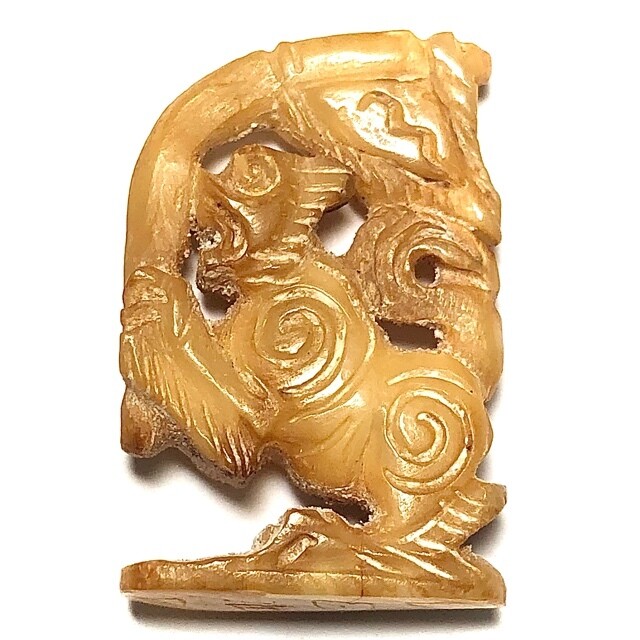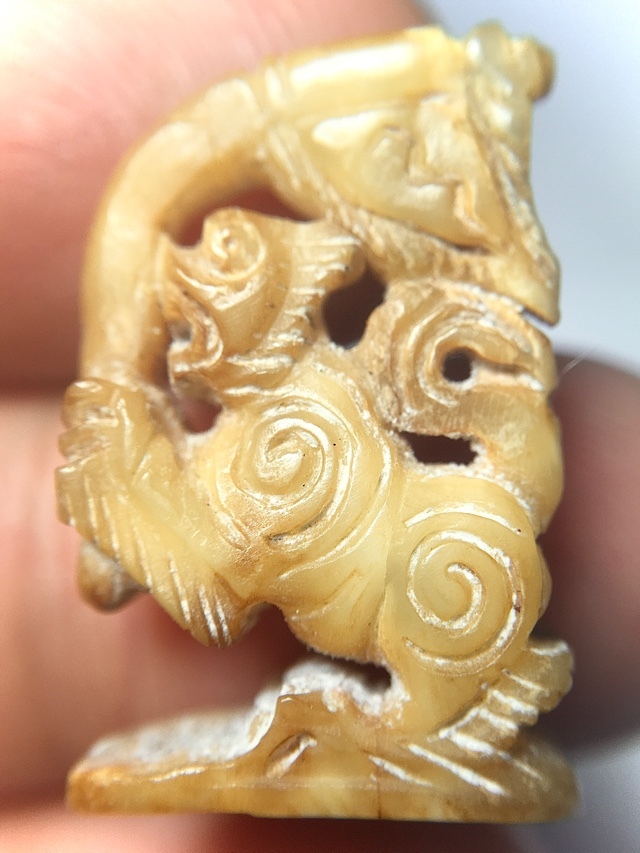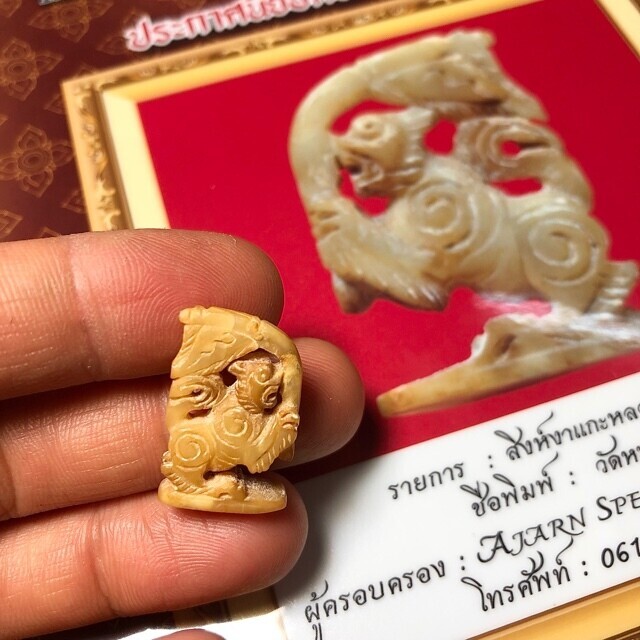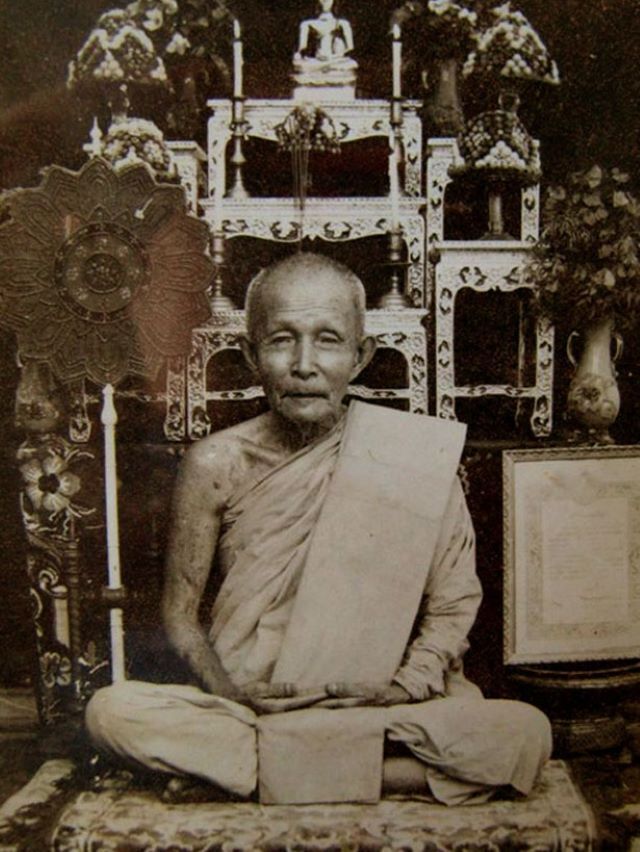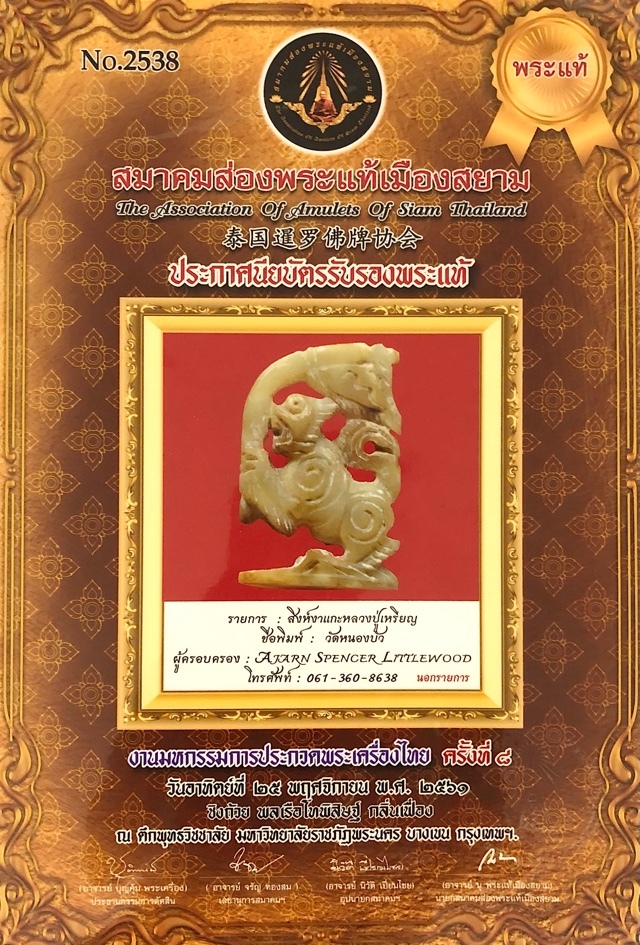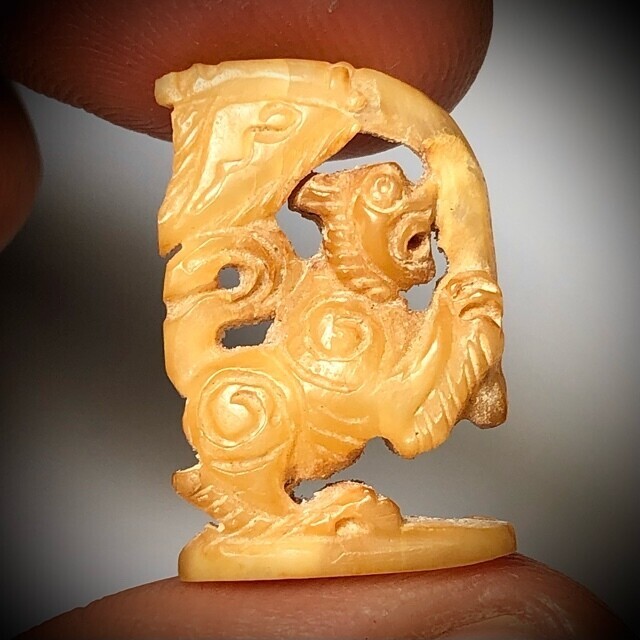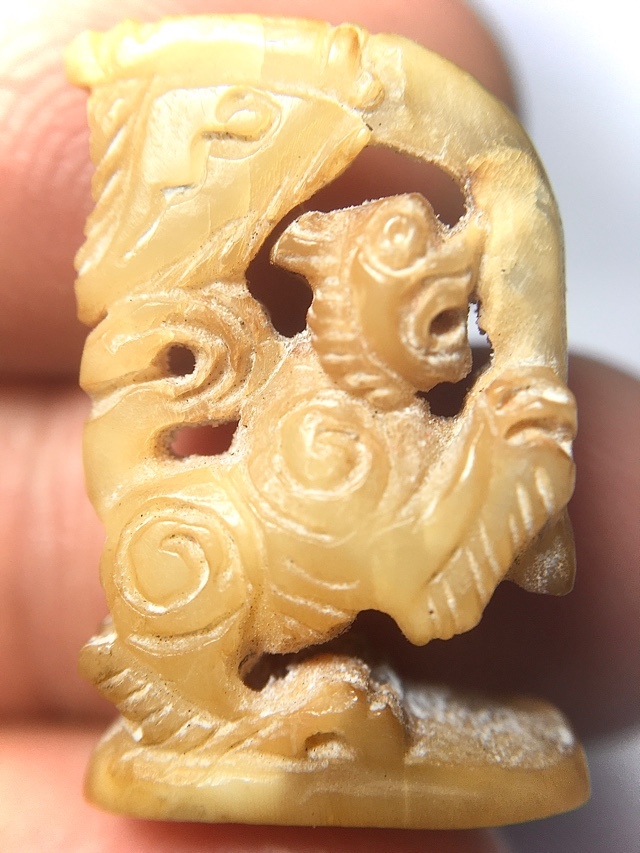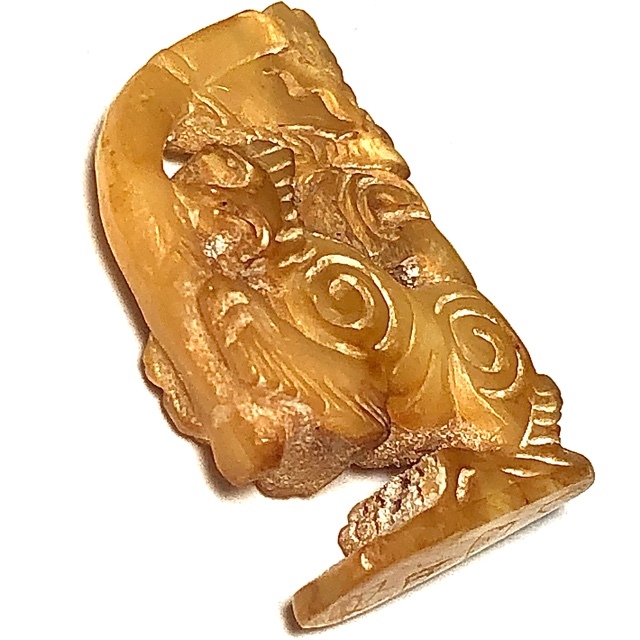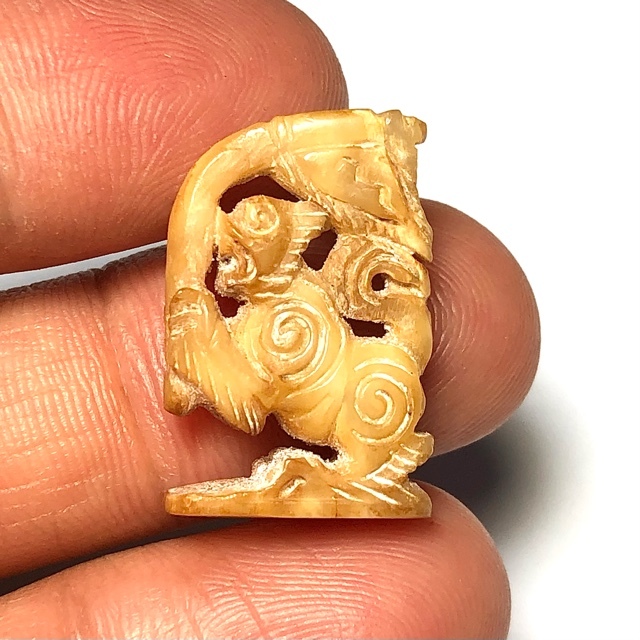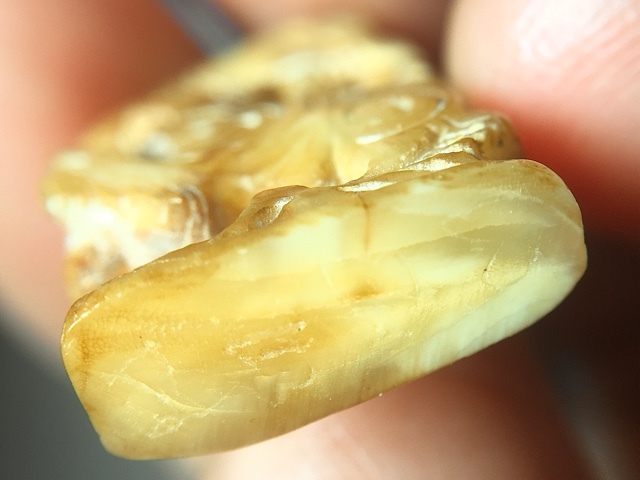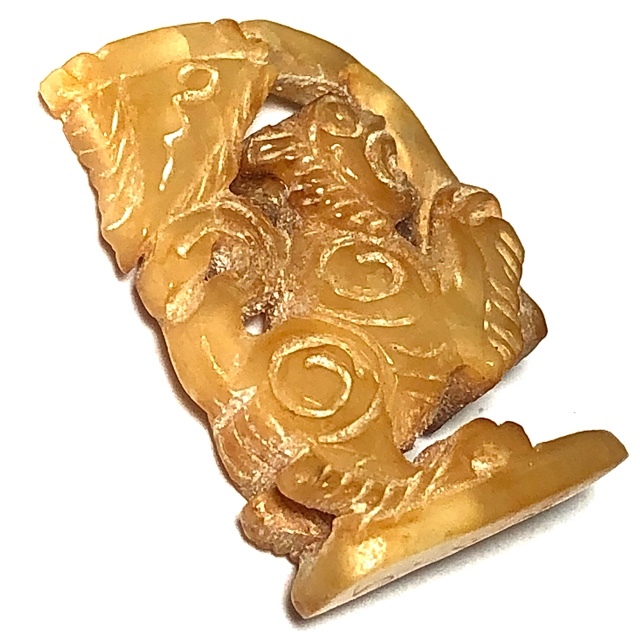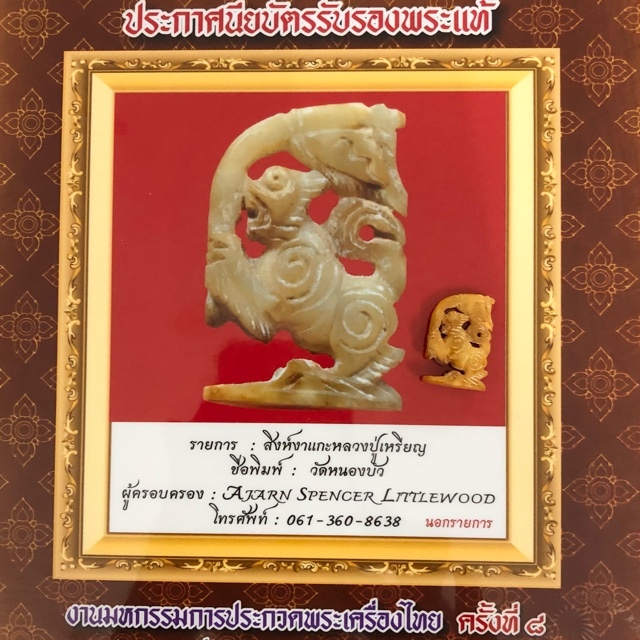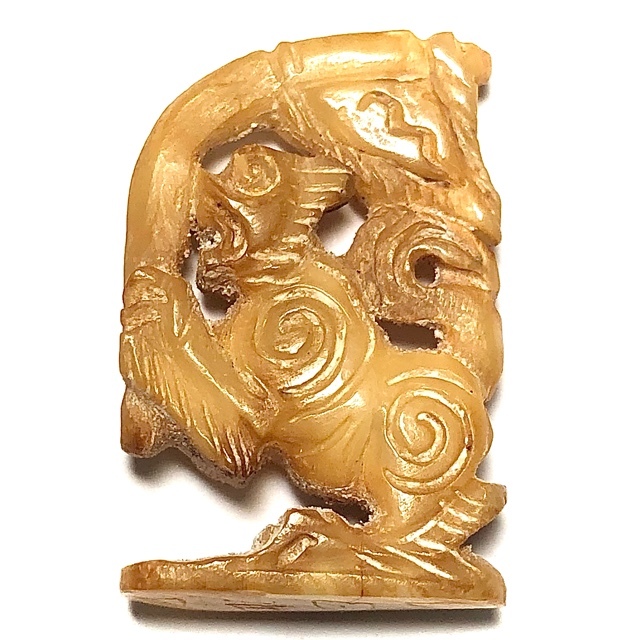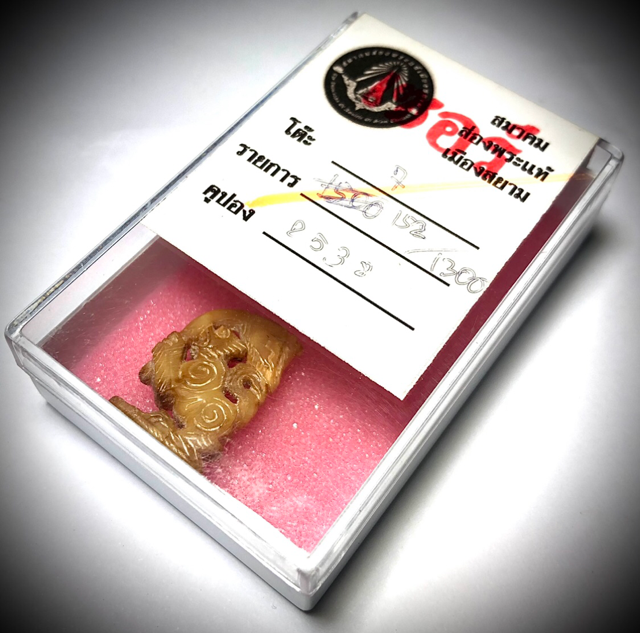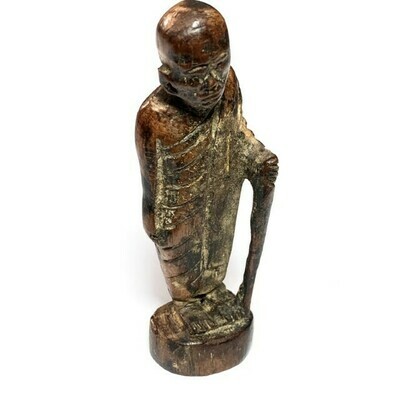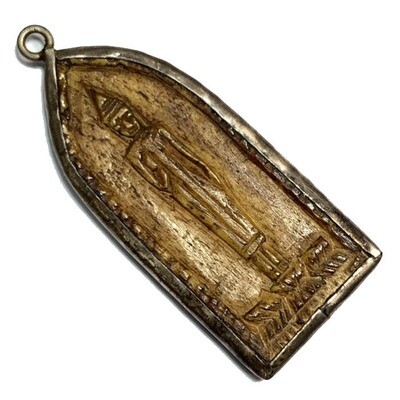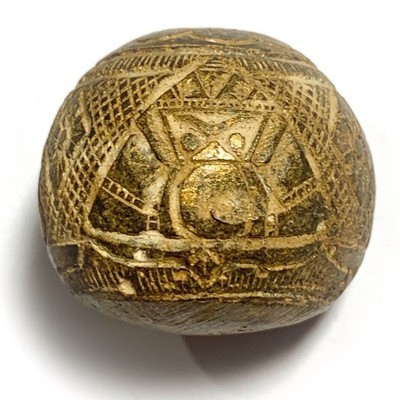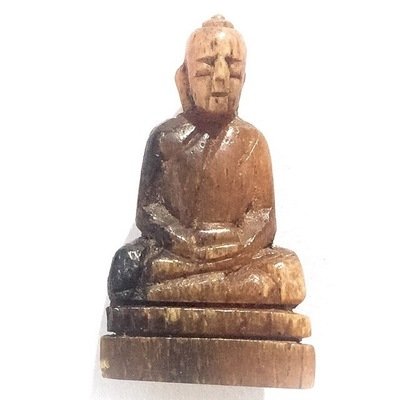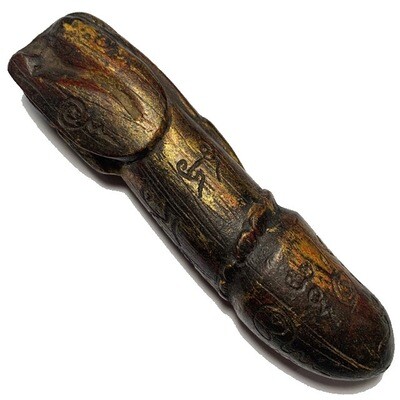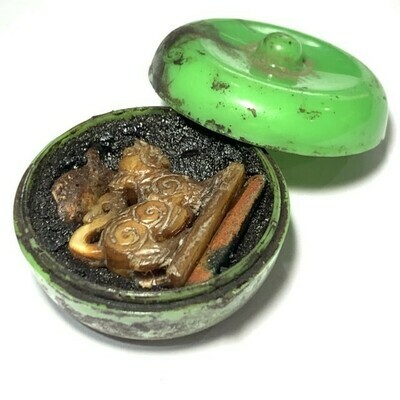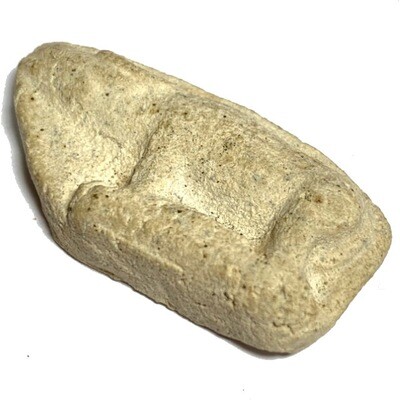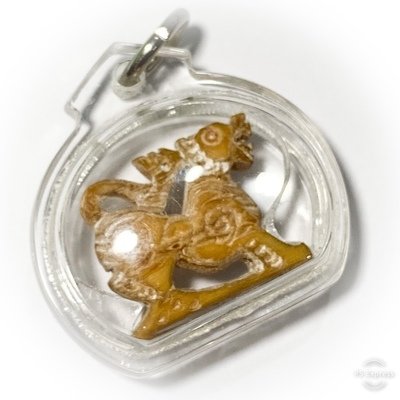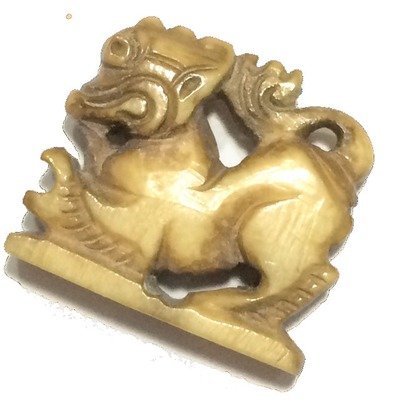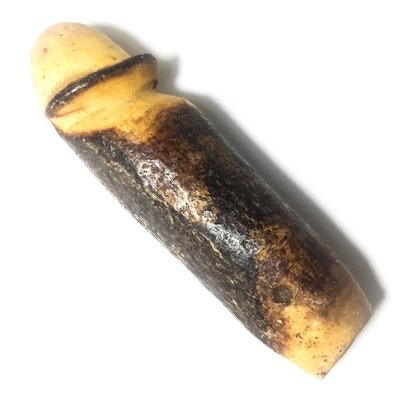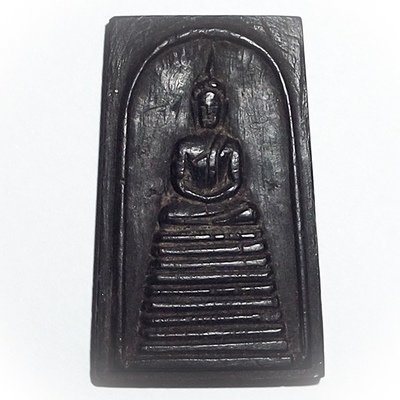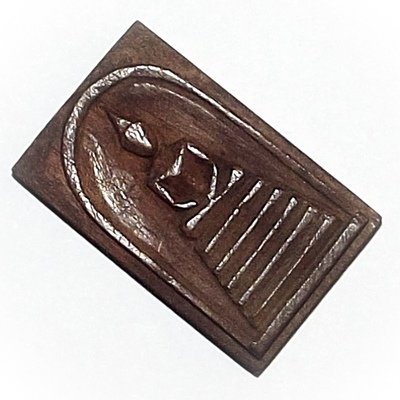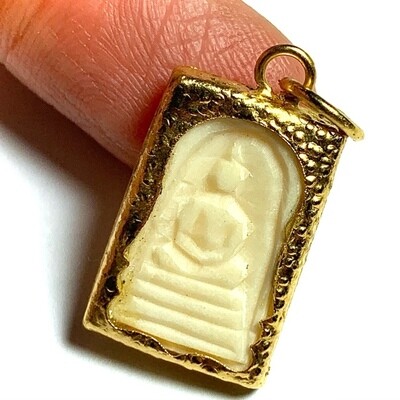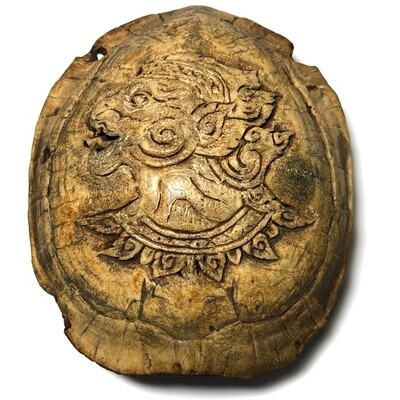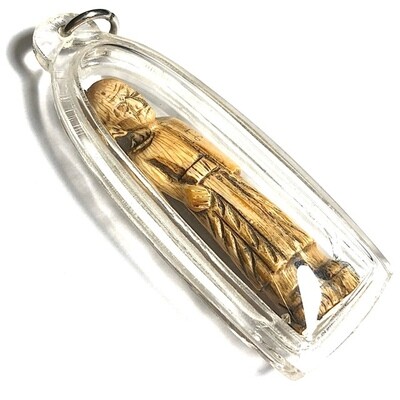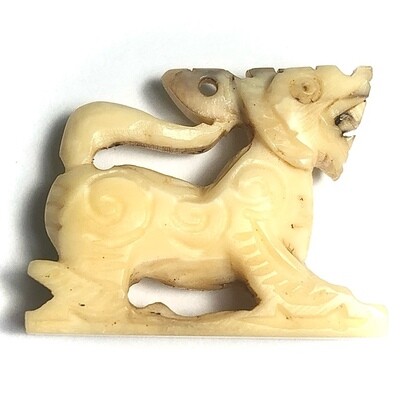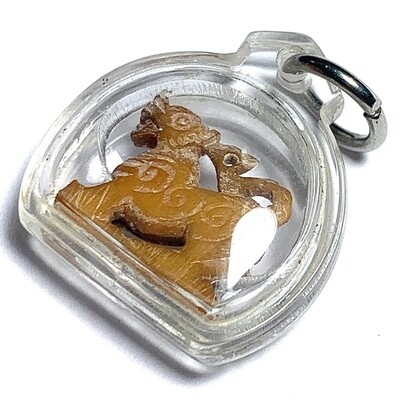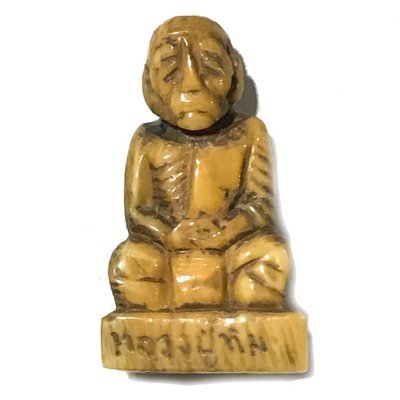Presenting a tiny but powerful and rare classic amulet from one of the Great Khao Or Masters of the 20th Century, Rian Glom Lek Hlang Chedi 2505 BE Nuea Tong Daeng Miniature Guru Monk Coin Por Tan Klai Wajasit
This Sacred amulet of the Great Khao Or Master of Nakorn Sri Tammarat, Master of Wat San Khan and Wat Pratat Noi, is a very rare amulet from Por Tan Klai’s 2505 BE Blessing Ceremony Edition, and is considered a ‘Jaek mae Krua’ type amulet (meaning ‘give to the kitchen maids and temple helpers’), which is suitable not only for men, but due to its miniature size, a perfect amulet for ladies or children to wear.

Rian Glom Lek 2505 BE Por Tan Klai Wajasit Wat Suan Khan
The 2505 BE edition of amulets of Por Tan Klai, is a highly preferred edition, which saw his famous ‘Rian Glom’ round Monk coin amulet with Chakra released, The Rian Glom Lek Hlang Chedi, and the Roop Tai Por Tan Klai Guru Monk Blesséd Photographamulets such as look om chan hmak and ya sen tobacco balls, and sacred powder amulets of various models.
A very rare and highly prized amulet for the devotees of Por Tan Klai to associate with his image and pray to him with a blessed image of the Guru, and the Chedi Relic Stupa on rear face for Buddhanussati and Marananussati. A powerful and Sacred amulet which has passed through the hands of the Guru and been blessed by him.
Por Tan Klai was one of the Top Guru Master Monks of the Last Century, and is considered one of the Four Great Masters of the Previous Generation of Lineage Masters of the Khao Or Southern Sorcery Lineage.
Kata Bucha Por Tan Klai
Paya Rachasri Nuea Nga Gae Carved Ivory Himapant Lion Luang Phu Rian Wat Nong Bua
Sacred Ivory hand carved Paya Rachasri Lion Holding Victory Flag, with hand spell inscrption on the base, and autneticity certificate fro the 2561 BE Meeting of the Association of Amulets of Siam Thailand. A very rare hand carved Ivory amulet, from the great Luang Phu Rian, Olden Days Sorceror Monk of Wat Nong Bua, in Kanjanaburi. Luang Phu Rian was the continuance of the Lineage of the Great Luang Phu Yim. This particular exhibit is from the early-mid era of Luang Phu Rian's trajectory, sometime around 2480 BE.
The Rachasri Lion, is representative of Maha Amnaj Commanding Power and Intimidating Aura, Serm Yos Power for increased status and Promotion opportunities,. The amulet is highly imbued with Kong Grapan Chadtri, Klaew Klaad, Metta and Maha Lap Magic. The Rachasri Lion is a King Lion of the HImapant Forest, and has appeared in a multitude of Thai Buddhist and vedic Myths and Legends, including the Ramayana and the Thai Ramakien Epic. The great Metta of the Rachasri Lion, as well as his Bravery, is always revealed in the legends. The Singha and the Rachasri Himapant Lions, are an Animist Deity from Vedic Lore, that has been an integral part of Thai Buddhist People's belief since the advent of Buddhism.
Above; Authenticity Certificate from the 8th meeting of the Society of Amulets of Siam Thailand from 2561 BE
The Singha Talisman has been found documented in the ancient 'Dtamra Pichai Songkram, Grimoire of Warcraft, that Thai Warriors wore the talisman as a form of protection, wielding Kong Grapan Chadtri and Klaew Klaad Evasion Magic power, endowed with Maha Amnaj (Commanding Power & Dominion). Mostly, the amulets were received from Guru Masters within the Ordained Sangha, and Lersi Sorceror Hermits, who were endowed with powerful Jhanic Meditation abilities and Psychic Powers to empower amulets with protective Magic.
Kata Pluk Paya Rachasri (Singha Lion)
Putta Saetho Mahaa Naathang Wan Nago Singha Naa Tagang Putta Sirasaa Dtaechaena Maara Saenaa Bparaa Cheuyyang Chayya Pakawandtu Mae
The Singha amulet is found in various forms, which can be separated into two main categories; Those which are made from natural materials which are found to occur in Nature, such as those carved from ivory, bone, Lek Lai, tiger tooth, sacred wood, wild boar tusk, deer antler, bear tooth, amd fossilised stone, jade and other mineral substances. The Paya Rachasri Phone (also called Rachasri Bpon Hyuea) amulet endows the wearer with Protection and Commanding Power, Social and Professional Status, and Good Chances of Promotion through the Aura of Respectability and Personal Power.


Luang Phu Yim would appoint Luang Phu Rian, to Invoke the Kata Akom Incantations, and make the Inscription of Khom Agkhara Spells on the surface of his talismans and amulets in his stead. After Luang Phu Yim had bestowed all of his Wicha upon Luang Phu Rian, Luang Phu Rian then became immensely famous for his powerful Magic.
His amulets received immense popularity with the local devotees, throughout 58 Years of Ordination, until his final passing. He is very famous for his carved wooden Pra Somdej Mai Sao Bote amulets, which were made from the pillars of the old Uposatha shrine room of Wat Nong Bua. It is said that Luang Phu Rian began to perform the carving of his rare and famous Pra Somdej Mai Sao Bote wooden Shrine Room Pillar amulets himself at the beginning. and later as they became ever more popular devotees and local artisans would help.
He would make many different amulets, some which emulated and continued the Wicha of Luang Phu Yen, and some which were of his own design, or taken from other Wicha. His Pra Pid Ta follow only second to those of his Mentor Luang Phu Yim, and are among the most highly regarded Pra Pid Ta amulets of their Region. Both Luang Phu Rian and Luang Phu Yim are considered to be two of the top Masters of Kanjanaburi Province of all History
The making of the famous Pra Somdej Mai Bote carved wooden amulets of Luang Phu Rian;
In the year 2494 BE, Luang Phu Rian saw that the Uposadha Shrine Room was becoming delapidated, and in need of constructing a new Uposadha. Luang Phu saw that the wooden pillars, which were already over a century old at the time, had received the powerful vibrational energies of the chanting of Luang Phu Yim and the Sangha Monks who had performed ceremonies throughout the century of its existence, and were full of Buddhakun Power from the Incantations of Luang Phu Yim and the prayers of the Monks.
The devotees would constantly bring pieces of the Uposatha pillar wood to Luang Phu to bless and make into amulets. Some amulets were carved by Luang Phu himself, and others were taken to artisans for carving, by the devotees who had been given pieces of the Uposatha pillar wood for Bucha, and some were carved by the villagers themselves, those who were too poor to pay an artisan. For this reason, there are many different levels of mastery

Above Picture; Just some of the many amulets of the pantheon of Luang Phu Rian (Wat Nong Bua), all of which are Rarities in this day and age, and are highly sought after amulets within the cult collector scene of the amulet appreciation society. The pantheon of amulets of Luang Phu Rian are just as famous and sought after as those of his predecessor and Kroo Ba Ajarn, the olden days Master Luang Phu Yim (Wat Nong Bua). Luang Phu Rian passed away in the year 2503 BE
Below is a picture of LP Rian's Kroo Ba Ajarn, and previous abbot of Wat Nong Bua; Luang Phu Yim, and a number of the great pantheon of his amulets, for you to also study and appreciate, and gather knowledge about the Pantheon of amulets of these two great Consecutive Guru Master Monks of Wat Nong Bua, in Kanjanaburi.

